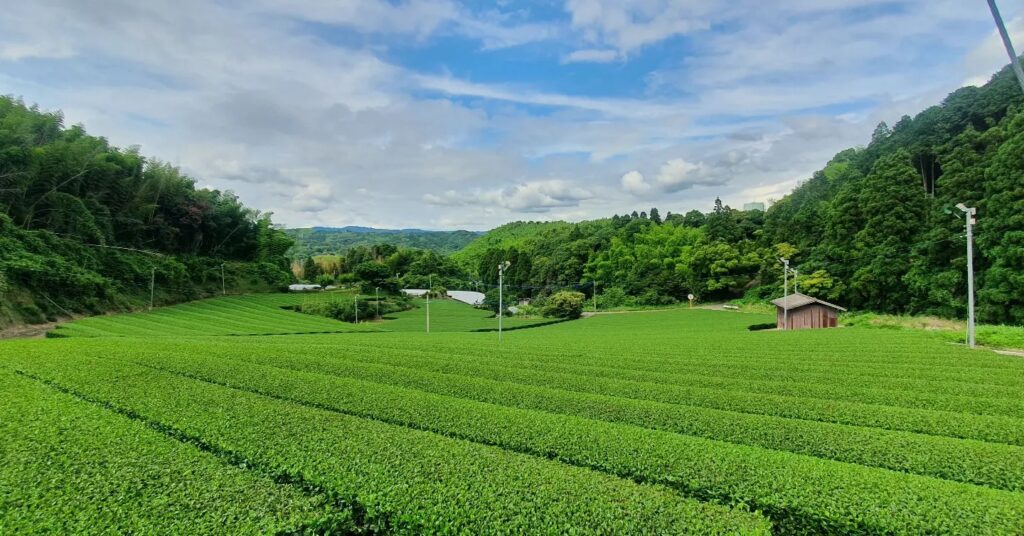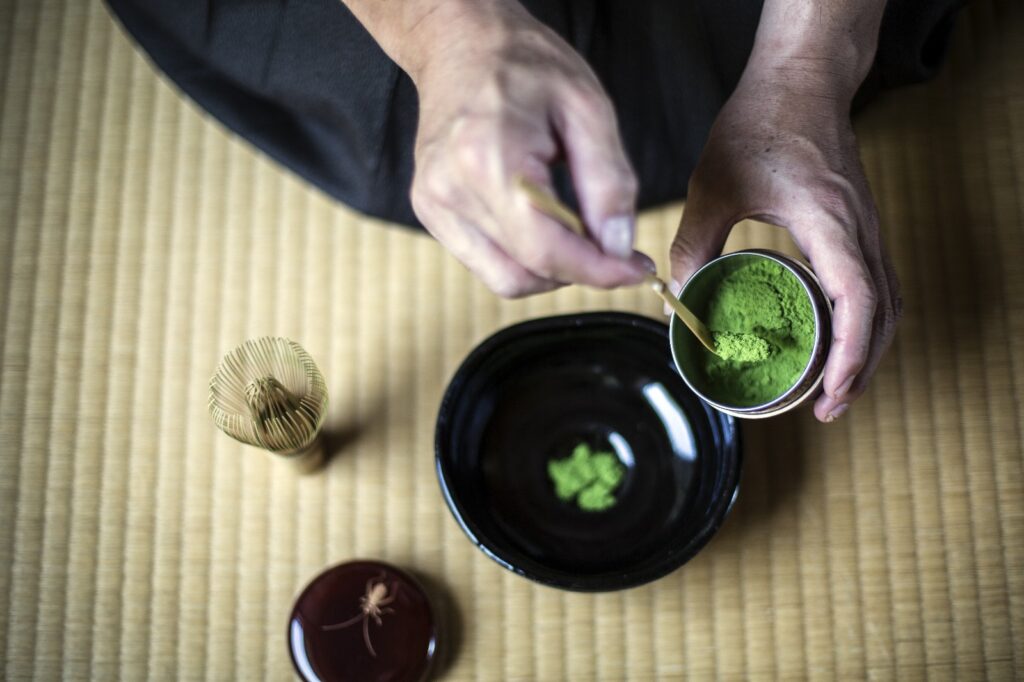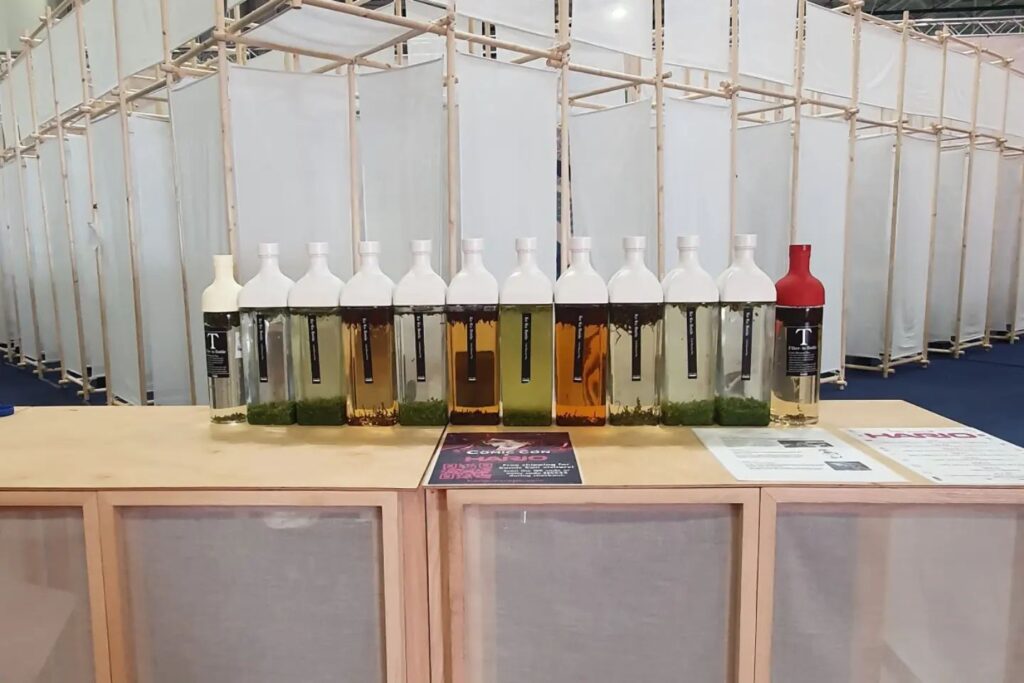Discover Japanese Tea - Japan Area
🌿A brief Introduction to Tea
Meet the Camellia Sinensis Plant
Before we explore Japanese tea, let’s answer a common question:
What exactly is tea?
All true tea comes from a single plant:
Camellia sinensis – a leafy evergreen shrub native to East Asia. It thrives in subtropical and tropical climates, often growing best in high-altitude regions with rich, well-drained soil.
There are two main varieties of Camellia sinensis: var. sinensis (Chinese variety) and var. assamica (India’s Assam region), each producing distinct tea flavors and characteristics. The leaves of the tea plant are rich in antioxidants, caffeine, and other compounds that influence the taste, aroma, and health benefits of tea.
Depending on how the leaves are harvested and processed, we get many types of tea:
🟢 Green Tea
🔴 Black Tea
⚪ White Tea
🔵 Oolong Tea
🟤 Pu-erh
Think of them like wines made from the same grape – the difference lies in how they’re crafted.
🌿 Tea vs. Herbal Tea
You’ve probably seen “herbal teas” like chamomile, mint, or rooibos…
But here’s the secret:
They’re not actually tea!
These drinks are called tisanes or herbal infusions – plant infusions made from herbs, flowers, spices, or fruits.
They’re naturally caffeine-free and flavorful, but since they don’t contain tea leaves, they aren’t considered true tea.
🍃 Why This Matters
When we talk about Japanese tea, we’re referring to styles made from Camellia sinensis, grown and crafted in ways unique to Japan.
From grassy matcha to toasty genmaicha, it all starts with this one remarkable plant.
🌿A Brief History of Japanese Tea
🏯 Origins in China
Tea was first discovered in China over 4,000 years ago, according to legend. The story goes that Chinese Emperor Shen Nong was boiling water when some tea leaves drifted into his pot – and the first cup of tea was born.
🗾 Tea Arrives in Japan
Tea made its way to Japan in the 9th century, brought back by Buddhist monks who traveled to China. At first, it was used mainly in religious rituals and among the aristocracy.
Monks valued tea for its ability to help them stay alert during long meditation sessions.
🍵 The Rise of the Tea Ceremony
In the 15th century, tea evolved into more than just a drink — it became an art form.
The Japanese tea ceremony, or chanoyu, developed under the influence of Zen Buddhism. It emphasizes:
- Mindfulness
- Simplicity
- Respect and hospitality
This ceremonial approach to drinking tea is still practiced today, and remains one of Japan’s most iconic cultural traditions.
A Living Tradition
As tea spread to all levels of society, Japan began growing and crafting tea in its own unique ways. The result? A wide range of teas with distinct flavors, styles, and cultural meaning.
Today, tea is enjoyed daily in homes, cafes, temples, and traditional ceremonies.
🍃Types of Japanese Tea
All made from Camellia sinensis – each tea is unique in flavor, aroma, and tradition.
Sencha 煎茶
Most popular green tea in Japan
- Grown in full sun and steamed after harvest
- Flavor: grassy, fresh, slightly bitter
- Enjoyed hot or cold all day
Matcha 抹茶
Powdered green tea used in ceremonies
- Made from shade-grown leaves (tencha)
- Whisked into a frothy drink
- Flavor: umami-rich, slightly sweet and bitter
Genmaicha 玄米茶
Green tea with roasted brown rice
- Mix of sencha or bancha + puffed rice
- Flavor: nutty, warm, toasted
- Great with food, low in caffeine
Gyokuro 玉露
Shade-grown tea
- Grown under shade for 20+ days
- Flavor: delicate, sweet, deep umami
- Brew at low temps (50–60°C)
Hōjicha ほうじ茶
Roasted green tea
- Roasted over high heat
- Flavor: toasty, nutty, low bitterness
- Very low in caffeine
Wakoucha 和紅茶
Japanese black tea
- A newer style made in Japan
- Flavor: sweet, mild, less astringent than foreign black teas
- Made using Japanese-grown tea leaves
Japanese Oolong
A rare tea style
- Partially oxidized, like Chinese oolong
- Flavor: floral, fruity, elegant
- Mostly made in small batches
Other Japanese Teas to Explore
- Bancha – everyday tea, harvested later in the season
- Kukicha – made from stems & twigs, very mild
How to brew Japanese Tea
Let’s look at how to prepare the most common types of Japanese tea.
| Tea Type | Tea Amount (g) | Water Temp | Water Amount (ml) | Steep Time | Notes |
| Sencha | 2–3 g | 60–75°C | 120–150 ml | 1–2 minutes | Fresh, grassy flavor. Can be re-steeped 2–3 times. |
| Matcha | 1–2 g (sifted) | 75–80°C | 60–90 ml | Whisk instantly | Use chasen (bamboo whisk). Whisk until frothy. |
| Genmaicha | 3–4 g | 80–90°C | 150–200 ml | 1–2 minutes | Nutty, toasty taste. Very beginner-friendly. |
| Gyokuro | 4–5 g | 50–60°C | 50–80 ml | 1–2 minutes | Small amount of water for rich umami. |
| Hōjicha | 2–3 g | 90–95°C | 150–200 ml | 30–60 seconds | Roasted, low caffeine. Great for evening. |
| Wakoucha – Black Tea | 2–3 g | 90–95°C | 150–200 ml | 2–3 minutes | Mild, smooth Japanese black tea. |
| Oolong | 3–4 g | 85–95°C | 150–200 ml | 1.5–3 minutes | Lightly oxidized and floral. No milk or sugar needed. |









